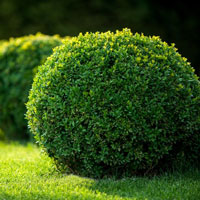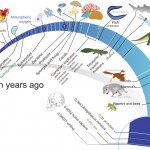Evergreen content is currently a buzzword in content strategy, and it’s considered a key success factor for content providers.
Here I’ve provided some answers to the most popular questions about evergreen content and its application in content marketing:
Definition of evergreen content
Guidelines for creating an evergreen piece of content
Examples of evergreen content types
Evergreen content as a gap filler or as a component of the content strategy?
Evergreen content examples and ideas
Tips for creating evergreen content
Evergreen content vs. other content types
What does evergreen mean in marketing
The term evergreen is much older than marketing. It has roots in botany and describes the plants that have leaves throughout the year.
In marketing, the term evergreen is used for the products, segments, and strategies that stay relevant over a long period. In another word, evergreen marketing is an umbrella term for any marketing idea, concept, action, or initiative that will last a long time while staying relevant and practical.
Evergreen segments, evergreen niche, evergreen products, and evergreen approach are just a few terms currently used in marketing and other management realms. Let’s take a look at the definition of some of these terms:
- Evergreen industry: An industry that always has a viable market.
- Evergreen business: Businesses that have a long life and are not much affected by seasonalities. Selling books or teaching English as a second language are examples of evergreen businesses compared to selling camping equipment.
- Evergreen stock option: An employee stock option with no expiration date.
- Evergreen design: Any design with enduring popularity and long life in the market. Minimalism is an example of an evergreen design style. Many different styles come and go, but the minimalistic style always has its own demand.
- Evergreen brand: An evergreen brand is a brand that never goes out of style and never gets old.
- Evergreen product: A product that always has market demand and retains its relevance over the long run. Pens, wallets, and bottled water are examples of evergreen products.
- Evergreen funnel: An autopilot marketing sequence that turns website visitors into customers. Landing pages with good call-to-actions and permanent incoming traffic (e.g., with SEO) are examples of an evergreen funnel.
- Evergreen advertising: Advertising that is not related to specific events or periods of time and stays relevant for a long time. So they stay on websites and billboards for longer or even permanently on the city walls and other outdoor placements.
- Evergreen books: Books that don’t stop selling and their content and context remain relevant for a long time. Classic books are examples of evergreen books. But many contemporary books can also be considered evergreen. Just compare a book on SEO techniques versus a book on the life of Barack Obama. Although the latter is not considered classic, you can still classify it under the evergreen category.
Definition of evergreen content
In the simplest definition, evergreen content is a piece of content that does not expire in the short term. But here you can find a more elaborate and formal definition of the evergreen content:
Evergreen contents are attractive because of driving more traffic, having a lower maintenance cost, getting a higher SEO rank, and receiving more social shares for a prolonged period.
Guidelines for creating an evergreen piece of content
Although every content without an expiry date can be considered green, there are many hints, guidelines, and statements about the properties and characteristics of an evergreen piece of content:
- Evergreen content can’t include news, statistical reports, seasonal topics, and current trends.
- Evergreen content shall preferably aim at narrow beginner topics. Such contents are best choices for creating evergreen content.
- Evergreen content should seek for higher stay time or long click (What is a long click).
- Evergreen articles are typically longer.
Examples of evergreen content types
Here you can find some examples to have a more clear picture in your mind:
- Most of the definitions are evergreen articles (e.g., definition of longform content, definition of complex systems, definition of content strategy, etc.)
- Resource lists are the other popular type of evergreen content (e.g., list of content strategy blogs, list of technology blogs, leading thinkers of the technology age, etc.)
- Checklists are another type of evergreen content that is attractive to beginner and expert readers.
- How-to articles can be easily designed in an evergreen format and can be helpful and engaging. You can take a look at the following topics as examples of such content:
Evergreen content as a gap filler or a component of the content strategy?
Every content provider has a portion of evergreen content in its content portfolio.
Reading any newspaper, you will find a mixture of green and non-green content that, in most cases, the ratio is not chosen deliberately and on purpose.
Most newspapers and news companies fill their content gaps with evergreen content. These companies would prefer to talk about last night’s blasts, and when there is no hot news available, fill the gap with a report about an old and forgotten place in the city’s suburbs!
However, for some content providers, evergreen content is something beyond a gap filler.
Content providers who deliberately include evergreen content in their content portfolio fall into two categories:
- Evergreen content businesses such as IMDb or Study.com
- Other businesses which use evergreen content for SEO purposes and as a driver for inbound traffic
Guardian serves as an excellent example for the second category.
Besides publishing up-to-date news articles, Guardian considers publishing evergreen articles as a permanent part of its editorial content calendar.
While the articles such as successful content strategy and dos and don’t of content marketing are outside their expected scope, Guardian insists on publishing such articles regularly to drive traffic to its website.
Most universities serve the same purpose by publishing part of their educational content as educational resources and proudly providing them free of charge to every website visitor.
While providing evergreen content as a traffic driver in the content strategy is more costly than direct advertising in the short run, this approach pays off well in the long run because of better rank in search engines and lower content maintenance cost.
Evergreen content examples and ideas
Here I have collected some ideas and examples of evergreen content. I am confident you will be able to list many other ideas after reading the following examples.
Write about persisting questions
Just think about the first questions your first readers (or customers) asked the first time they visited your website. Among them, you will find issues that are still relevant, and most of your new audiences are still looking for the answer to those questions.
Write about the structure of your industry
No matter the industry, it’s always helpful and fascinating for the audience to read about the structure of your industry.
Industry structures do not change very fast, and such informative content can live for years without needing a fundamental change and adjustment.
Write a glossary for your topic of interest
Glossaries are one of the best options for creating evergreen content. Glossaries have a long lifespan, and your audience will love them, especially if they are comprehensive and relevant.
You can check the following documents as examples of this content type:
- Mobile marketing glossary
- A short glossary of marketing terms
- Knowledge management glossary
- Concise dictionary of management terms
Create a list of useful resources for beginners
Advanced articles and resources are usually subject to change. But basic documents and resources remain valid for a relatively long period.
Therefore, preparing and publishing resource lists for your novice user is a good idea.
Check the following articles to have a better idea about this content type:
- Kissmetrics’ content marketing resources
- Content marketing resource list provided by VisualNews
- Digital Content Marketing Roadmap
- Content marketing resources provided by SingleGrain
- Free SEO and web analytics tools
- Curata’s resource list for content marketers (don’t miss out)
Worst practices for obtaining a specific goal
Although it’s quite popular to write about best practices, writing about worst practices can be a gold mine for your audience too.
While this type of content benefits your readers, it’s much less competitive than the best practice lists provided by virtually all the great players in the field.
Check the following articles:
- Five worst practices in content marketing
- 14 sales worst practices
- Top five worst practices in business intelligence
Historical examples and case studies
When you cite a recent case study, very soon, it will get outdated.
You have to change words and edit phrases, and still, your blog will look outdated.
Your audience will probably be more impressed by a story from five decades ago than a case study that refers to a two-year-old story. While the former looks like an informative case, the latter may be perceived as outdated content.
Tips for creating evergreen content
Your content needs not to be timeless to be considered evergreen
Some of the contents are literally timeless. These contents are valid even centuries later. Just Imagine the following articles:
- The fall of Rome: How did it happen?
- How did Steve Jobs start his career in the digital industry?
- 20th century in literature
- How to face stress and anxiety in your daily life?
But there are many topics and articles which are not eternal but have a much longer life than the average life of the popular articles. These articles are valid and relevant until a disruption happens or some progress happens in a field.
This type of evergreen content is usually called sustainable content.
Here are two examples that I consider sustainable (but not timeless):
- 10 SEO tips to consider when writing short-form articles (Such article can stay relevant for one or two years)
- How to choose the right mobile phone for yourself? (May remain relevant for two or three quarters and even more with minor modifications)
I think it’s more logical, feasible, and rewarding to consider sustainable content as a part of your evergreen content strategy plan and not rely solely on timeless content.
Don’t get stuck in one particular content type
Most content creators are inclined to certain content types.
For some of them, evergreen content means a ‘how-to’ article. Some others use checklists and questionnaires as evergreen content. But remember that evergreen content has many forms.
Don’t let the social media trends overshadow your content strategy
Social media is an invaluable source of ideas for your content creation. However, be careful not to be distracted by hypes and trends.
You can learn the taste of your audience and the ingredients of their current content diet. You can also find their questions and what they are willing to pay for.
But evergreen content is not meant to satisfy the transient and temporary needs of your audience. There you have no chance to compete with real-time mostly-free easily-accessible social content.
The evergreen content’s competitive advantage lies somewhere else.
Start with your current content assets
If you are not new to blogging and currently already have a collection of articles on your blog/website, first look for already existing evergreen articles on your blog.
Check the Google webmasters tool and look for old articles that have a high click rate (or even a high impression with low CTR). These low-hanging fruits are much easier to pick and have more potential for immediate results and draw more traffic to your blog/website.
Moreover, prepare a list of your evergreen content and schedule a regular update and optimization plan for them. Each piece of content may need a different check/update frequency.
Although it’s easy to check the history of organic traffic to each URL (via a simple query in Google’s webmaster’s tool), I do strongly recommend making a separate table (in paper or digital format) and registering the total number of visitors landed on each URL every month. Such a table can be an indispensable source of insight if you update it regularly.
Don’t make it over-green
To make our content evergreen, sometimes we deliver over-green content to the audience. Such excessive efforts often lead to dull, boring content.
To take an extreme imaginary case, suppose a blogger who wants to use Twitter in a sentence. He thinks that one day Twitter won’t exist, and my sentence will look outdated. So he decides to substitute the word Twitter with the following phrase: “one of the popular social media tools that helps you to share short messages.”
Of course, such an extreme case won’t happen. But there are many milder cases in which we deliberately use over-green words and phrases to make our content evergreen.
Experts are rarely your audience
Sure, there are some cases where an evergreen article targets experts and becomes successful. But usually, experts are not the audience of evergreen articles. Even if they reach such articles, most probably will skim over the articles to find references and resources.
So unless you have a sound strategic reason, it’s recommendable to target non-experts. These audiences are more likely to have a longer stay-time and deeper click-throughs, leading to better SEO scoring.
Don’t sacrifice relevance for better search results
Many content creators try to make their evergreen content as comprehensive as possible.
Such a strategy may lead to better search engine scoring and higher impression and click rates. However, don’t forget that your final goal is conversion, and sacrificing relevance for whatever reason would hardly lead to more conversion.
The same logic applies to keyword stuffing. Besides the fact that most search engines recognize this strategy and penalize it, this approach won’t result in more conversions and will just decrease your credibility and dilute your relevance in the eyes of the audience.
Don’t forget downloadables
The importance of downloadable stuff can hardly be overstated. As I have said many times, downloadable files resemble physical commodities in the digital world.
Any website with a long-term content strategy must have a dedicated page for resources (Including downloadables and valuable external links). However, evergreen articles will become more attractive if you consider a download section in their design.
Evergreen content vs. Other content types
Although many content strategists emphasize the importance of evergreen content, we have to accept that there have to be other alternatives to evergreen content creation.
Here I’ve listed a couple of alternatives to the evergreen content type. Although they are not totally different, and there might be some overlap, it helps to regard them as separate categories.
Topical Content
As you may have noticed, most of the introductory contents are (or can be) evergreen.
When you dig deeper into a topic, the chances are that you shorten the lifespan of your content because you have to mention current trends, up-to-date tools, relevant news, and many other short-life content pieces.
Therefore, the so-called topical content that goes into detail usually has a shorter lifespan and is regarded as an alternative to the evergreen content strategy.
Seasonal Content
Seasonal content can be evergreen too. However not suitable for all the seasons. Consider an article titled “How to minimize chances of getting a cold this winter?”.
Such an article will be helpful this year, next year, and even a decade later. But it will be helpful in a few months when the weather gets colder.
Guides for choosing schools, attending entrance examinations, finding a new home, and many other similar topics are usually classified as seasonal content.
Real-time content
Sports and stock market news websites are among many other content creator businesses that are heavily relied on real-time content.
Although such contents have a very limited lifespan, there are still various ways to generate revenue based on real-time content.
Dated Content
Most of us do not consider dated content as a valuable asset. However, take a second look at The Internet Archive to see 300 billion archived web pages that are literally dated content. They are still a really valuable asset not only for the organization itself but for humanity as a whole.
Viral Content
Viral contents are another example of non-evergreen content types. Most viral contents have a very short lifespan. However, many content marketers use this type of content to promote products, businesses, and social moves.
Newsjacking Content
There are various definitions of newsjacking. But there’s a common element in all of them: Newsjacking, similar to hijacking, uses the trending and popular news as a platform for promoting a personal or business brand.
Just consider one of the recent social media contests that got popular in your community. Sure, you can remember a few bloggers or social activists criticizing the contest and publishing articles against public opinion.
Such articles will be of no value after a short period, but the content creator has made an audience with this newsjacking technique. The evergreen content usually does not provide such opportunities on a large scale.







